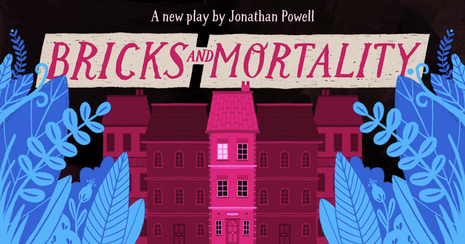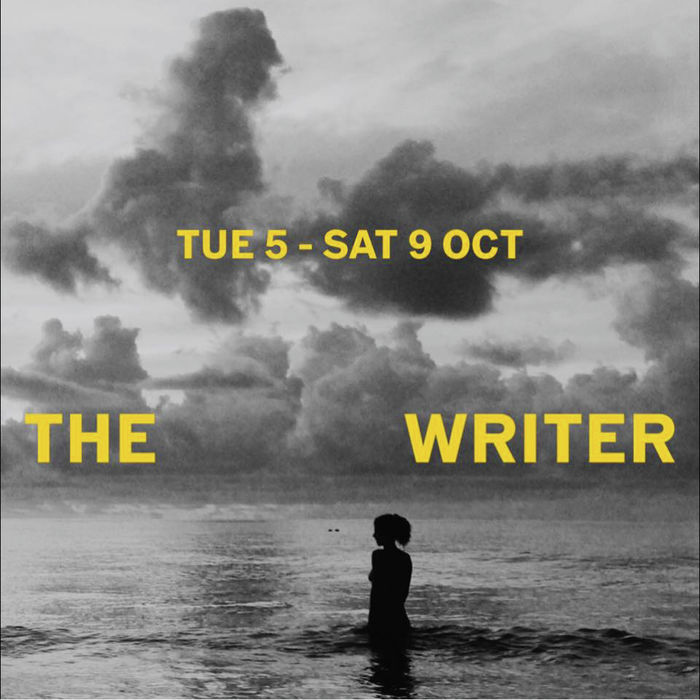Bricks and Mortality review: a brooding, tragic horror
Attempting to clear out the infamous Historical Hotel, Martha (Maria Telnikoff) notices there’s something wrong with the house, in this play by Jonathan Powell

We spectate the Nest family and their accumulated clutter which fills the hotel and holds their memories. The betrayals felt between these family members, frequently metaphorized as a tree with twisted roots, are gradually teased out and revealed with affect. Nest seems the perfect charactonym, drawing together the idea of a family home, a nest, which is increasingly seen to be hollow, shattered and fragmentary
"Powell intricately connects these memories of a wrecked family and sabotaged nature".
Yet other aspects of memory and mortality are explored, interconnected with this family drama. The mother runs off to romantically fight for an ecological memory in times of ruthless environmental destruction. Gerald Nest (Cian Morey), the eccentric, bitter son’s only memory of her is reduced to a taxidermized, now extinct parrot which gazes over the stage and audience. This is a brilliant physical manifestation of the problematic nature of the mother’s departure to save nature, which in turn plunges her family into distress and fractures. Yes, the parrot has been saved, memorialized, but its frozen, static nature renders it completely pathetic. Even ironic in light of its extinction. Powell intricately connects these memories of a wrecked family and sabotaged nature. By the denouement, I remember glancing at Gerald Nest, out of the main action, carrying an imageless picture-frame. I thought what a succinct metaphor for his tragedy: desperately clutching on to some gilded frame, some appearance of idyllic childhood, yet finding it hollow, imageless, deserted.
Two of the most interesting and dynamic characters of the play where White and Black. They are straight out of a Medieval allegory play, yet re-designed and re-purposed for this drama of memory. White attempts to see the good, the optimistic in the varied memories, while Black cruelly undermines him with cynicism. They intermittently play a game of chess, positioned central to the stage, in a metaphorical battle over the perceived beauty or foolishness of seeing affect and power in memory. Interestingly, they seem also to be the black-and-white medium of old photographs. The old family photos in their black and white, scattered around the stage, provide insights into distant relatives, past lives and worlds. Black and White are then a dexterous characterization of these images and photos which contain and produce all our family memories, located in a verbal and dialogical contest over their purpose and power.
"At the right price, grief seems painless, effortless"
The play’s action unfolds when Martha (Maria Telnikoff) is sent in to clear-out and demolish this family hotel. To demolish the bricks and their memories. Her company has produced a memory-stick which circumscribes all the family’s memories, neatly digitalized, so grief is made all the simpler for the customer. A new facet of memory and mortality is navigated here – its commodification. At one point, in a brilliant pastiche of an annoying, modern advert, Martha turns to the audience, in a verfremdungseffekt, telling us of the ease of this process. At the right price, grief seems painless, effortless.
Yet when the walls begin to whisper and she meets the individuals of the Nest family, with all their memories, this world-view begins to crumble. Martha must negotiate between a brutal commodification of memory, getting the job done in ‘time for tea’, and her personal, emotional affinity to this family and its multiplicities of traumas. Increasingly it seems they cannot just be “cleared out”. At the climax, Martha is left with a choice – to accept or burn these unveiled memories.
The tick, tick, tick of the grand-father clock runs throughout this denouement, the sense of time encasing, entrapping, marching broods over both character or audience.
 News / Eight Cambridge researchers awarded €17m in ERC research grants27 December 2025
News / Eight Cambridge researchers awarded €17m in ERC research grants27 December 2025 News / News in Brief: carols, card games, and canine calamities28 December 2025
News / News in Brief: carols, card games, and canine calamities28 December 2025 News / Caius mourns its tree-mendous loss23 December 2025
News / Caius mourns its tree-mendous loss23 December 2025 Interviews / Meet Juan Michel, Cambridge’s multilingual musician29 December 2025
Interviews / Meet Juan Michel, Cambridge’s multilingual musician29 December 2025 Sport / Hard work, heartbreak and hope: international gymnast Maddie Marshall’s journey 29 December 2025
Sport / Hard work, heartbreak and hope: international gymnast Maddie Marshall’s journey 29 December 2025








